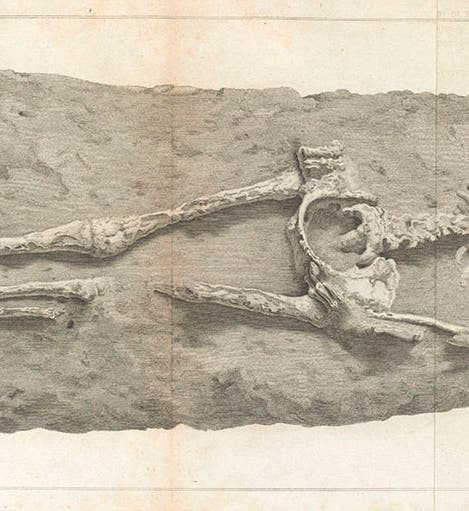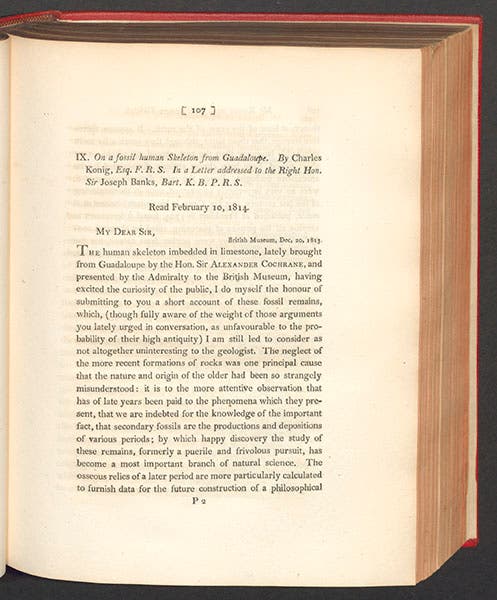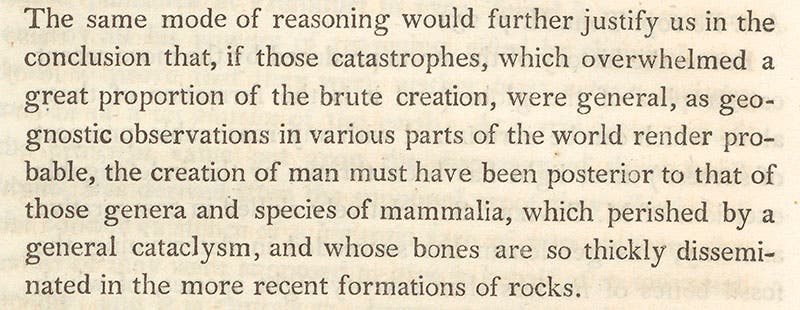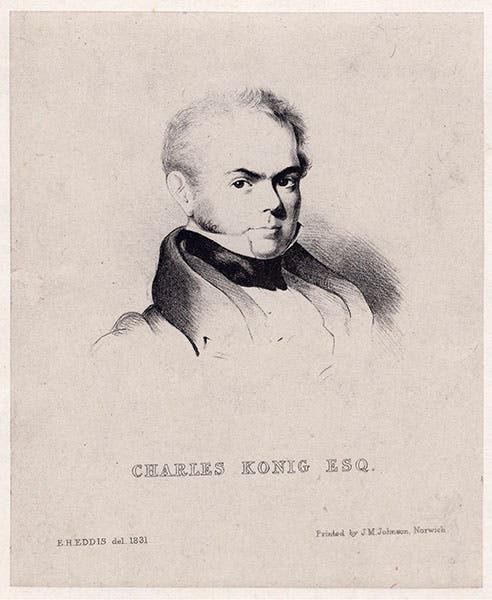Scientist of the Day - Charles Konig
Charles Konig, a German mineralogist who emigrated to England, died Sep. 6, 1851, at age 77; his date of birth is unknown. Konig did well in English natural history circles and rose to become Keeper of the Natural History section of the British Museum in 1813 (this was before there was a separate museum of natural history). In 1837, the Natural History section was sub-divided into three separate parts, one of which was Mineralogy and Geology, and Konig headed up that division until his death. He doesn't seem to have been a stellar contributor to his field, and he is most notable to historians of geology for being resistant to the suggestion of William Smith that fossils could be valuable stratigraphic indicators for geologists. In fact, when Smith had to sell off all his specimens after he faced financial difficulties, and they were purchased by the British Museum, Konig had them consigned to storage and never even unpacked them, even though these were the very specimens on which Smith's great geological map (1815) and his Strata Identified by Organized Fossils (1816) were based. So were it not for the following, we would probably never have elevated Konig to Scientist-of-the-Day status.
In 1814, Konig published an article in the prestigious Philosophical Transactions of the Royal Society of London, called: "On a fossil human Skeleton from Guadaloupe". This was an account of a human skeleton found in Grande-Terre, Guadeloupe, Leeward Islands, that was completely encased in a hard limestone. The two-ton slab had been collected and given to the British Museum by Sir Alexander Cochrane, whence it came into the hands of Konig. In 1814, the conventional view, which is to say, the view of Georges Cuvier, was that humans were recent additions to the earth, no older than 6000 years, and thus new to the geological record. This was a notion that could be falsified by the discovery of a single human fossil accompanied by the skeletons of mastodons, cave bears, or ichthyosaurs, or that was otherwise very old.
But Konig argued, supporting Cuvier, that although the Guadaloupe skeleton looked ancient, encased as it was in hard stone, in fact it was not all that old. And there were no remains of extinct animals anywhere in sight (third image). Cuvier’s theory of a recent origin for humanity would survive the Guadaloupe skeleton.
The best part of Konig’s article is the folding engraved plate, which would be often reproduced in later discussions of human antiquity (first image). It was drawn and signed by the British artist William Alexander. As you can see, much of the skeleton, including the skull, did not survive excavation, if those parts were ever present. The drawing was engraved by James Basire, of the noted English family of engravers. This was probably executed by James Basire II. We posted an essay two years ago about his son, James Basire III.
Dr. William B. Ashworth, Jr., Consultant for the History of Science, Linda Hall Library and Associate Professor, Department of History, University of Missouri-Kansas City. Comments or corrections are welcome; please direct to ashworthw@umkc.edu.









